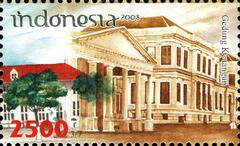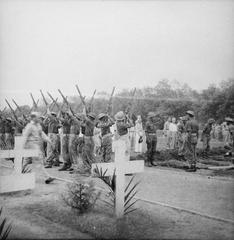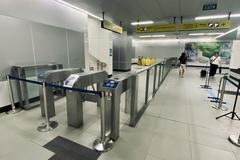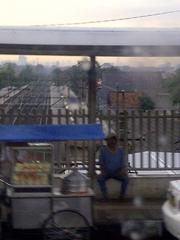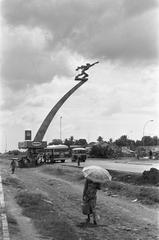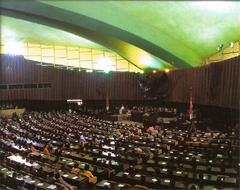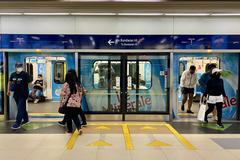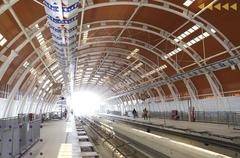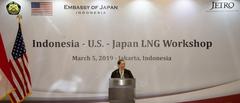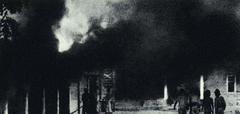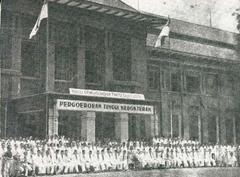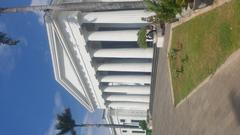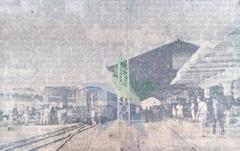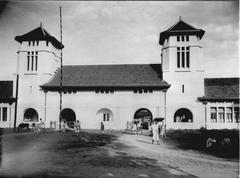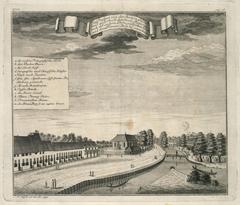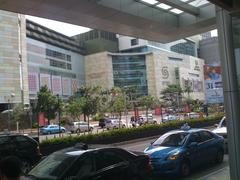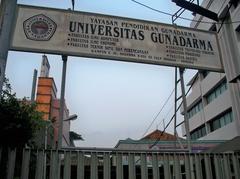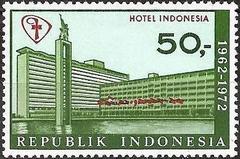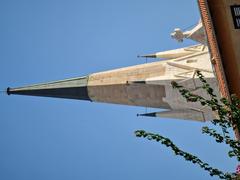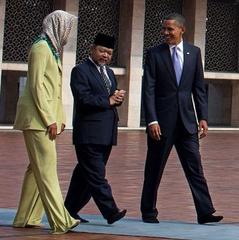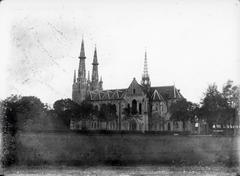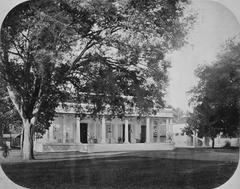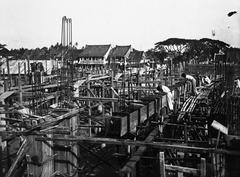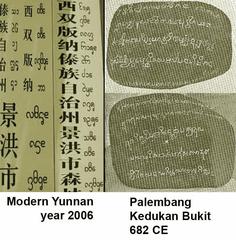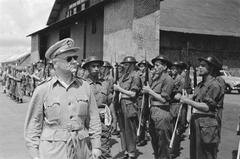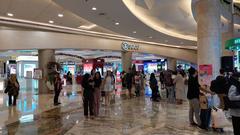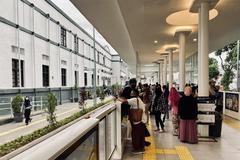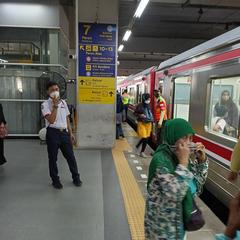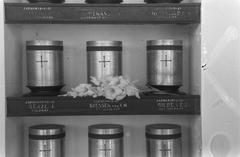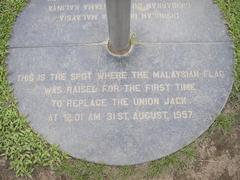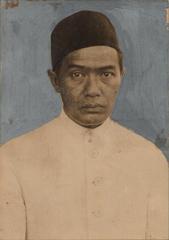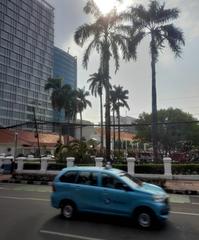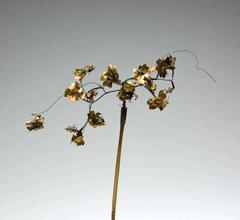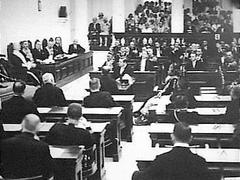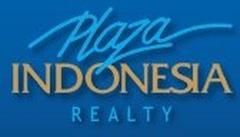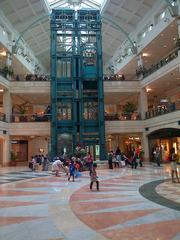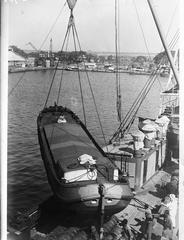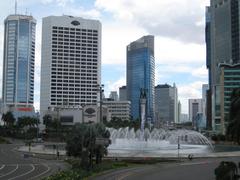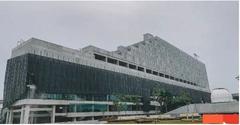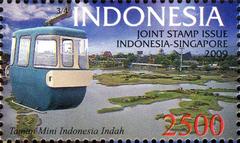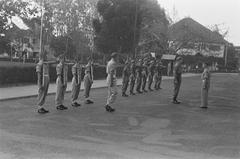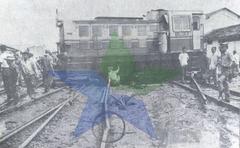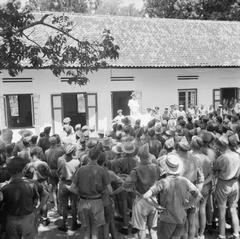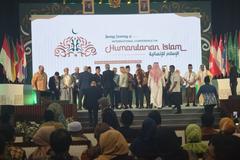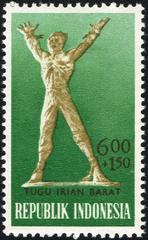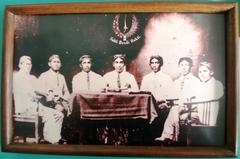Cakung Railway Station Jakarta: Visiting Hours, Tickets, and Travel Guide
Date: 14/06/2025
Introduction to Cakung Railway Station and Its Significance
Cakung Railway Station, located in East Jakarta, Indonesia, is not only a bustling commuter hub but also a historical landmark that has evolved alongside the city’s rapid development. Established during the Dutch colonial era in the early 20th century, the station has witnessed Jakarta’s transformation from a colonial outpost to a modern metropolis. Today, Cakung serves as a key stop on the KRL Commuterline’s Blue (Bekasi) Line, connecting Jakarta’s city center with the eastern suburbs and neighboring cities like Bekasi and Cikarang.
The station’s blend of colonial-era and modern architectural elements makes it a point of interest for rail enthusiasts and history lovers alike. Cakung is also strategically positioned near important transport nodes such as Terminal Pulogebang and is integrated with local bus and ride-hailing services, enhancing its importance within Jakarta’s extensive transit network.
For the latest schedules, ticketing, and travel tips, consult the KRL Commuterline Official Site or use recommended transit apps for real-time information (Jakarta Travel Guide).
Table of Contents
- Overview of Cakung Railway Station
- Visiting Hours and Days of Operation
- Ticket Information and How to Buy
- Travel Tips for Visitors
- Historical Background and Significance
- Train Services at Cakung Railway Station
- Connectivity: Local and Regional Links
- Facilities and Accessibility
- Nearby Attractions and Things to Do
- Photographic Spots and Events
- Safety Considerations at Cakung Station
- Local Insights and Visitor Tips
- Frequently Asked Questions (FAQs)
- How to Get Here
- Conclusion
- References
Overview of Cakung Railway Station
Cakung Railway Station (Stasiun Cakung, code: CUK) is a major transit point in East Jakarta. Primarily serving the KRL Commuterline’s Blue Line (Bekasi/Cikarang Line), it links Jakarta’s eastern suburbs with the heart of the city and neighboring regions. With upgraded facilities and high-frequency services, Cakung is a vital part of Jakarta’s public transport network and a gateway to the area’s local culture and history.
Visiting Hours and Days of Operation
- Operating Hours: Daily from approximately 4:00–4:30 AM until midnight.
- Service Frequency: Trains arrive every 10–20 minutes during peak hours.
- Note: Schedules may vary on weekends and public holidays. Always check the latest updates on the KRL Commuterline site or mobile apps before traveling.
Ticket Information and How to Buy
- On-Site Ticket Counters: For cash transactions.
- Ticket Vending Machines: Self-service for quick purchases.
- Digital Tickets: Use the official KRL app or Jak Lingko card for cashless payments across multiple modes of transport.
- E-Money Cards: Accepted cards include JakCard, Flazz, Brizzi, and Mandiri e-money. QRIS Tap is also supported.
- Ticket Prices: Generally range from IDR 3,000 to 7,000, depending on distance.
Tip: Purchase or top up your e-money card before arriving to avoid queues during rush hours.
Travel Tips for Visitors
- Best Time to Visit: Off-peak hours (mid-mornings or early afternoons) for a relaxed experience.
- Accessibility: The station is fully accessible with ramps, elevators, and tactile paving.
- Safety: CCTV, security staff, and routine checks help maintain a safe environment.
- Digital Tools: Use apps like Moovit, Traveloka, Grab, Gojek, and Google Maps for real-time schedules and navigation.
Historical Background and Significance
Early Foundations and Colonial Era
Cakung Station was established in the early 20th century as part of Batavia’s (now Jakarta) expanding rail network, facilitating the movement of agricultural goods and connecting the city center to the eastern outskirts.
Post-Independence Growth
After Indonesian independence, Cakung’s role grew as urbanization brought new industries and residents to East Jakarta. The station’s facilities expanded from three tracks to its current six-track configuration, keeping pace with the city’s needs.
Integration into the KRL Commuterline
Modernization efforts in the 2010s saw Cakung incorporated into the KRL Commuterline, with new platforms, improved accessibility, and digital ticketing, transforming it into a contemporary urban transit hub.
Train Services at Cakung Railway Station
KRL Commuterline Services
-
Bekasi/Cikarang Line:
- Connects Jakarta Kota with Bekasi and Cikarang.
- First trains depart around 4:00 AM; last departures close to midnight.
- Frequency: Every 10–20 minutes during peak times.
-
Facilities on Trains:
- Air-conditioned EMUs, unreserved seating, priority seats, bilingual announcements.
- No toilets or food service on board.
Station Facilities and Passenger Experience
- Waiting Areas: Sheltered and comfortable.
- Porter Services: Available for a small fee.
- Restrooms: Public toilets provided (cleanliness varies).
- Shops and Food: Kiosks and minimarkets at and near the station.
- Parking: Limited spaces for cars and motorcycles—arrive early during peak times.
Connectivity: Local and Regional Links
Integration with Jakarta’s Public Transit
- Bus Connections: Multiple routes (e.g., K25, T32, T25, JAK100) at Stasiun Cakung 2 bus stop.
- TransJakarta BRT: Feeder buses link to BRT corridors.
- Ride-Hailing: Grab and Gojek widely available.
- Proximity to Terminal Pulogebang: Easy transfers to intercity buses.
Access to Major Destinations
- Central Jakarta: About 40–50 minutes by direct train.
- Bekasi/Cikarang: 15–45 minutes eastbound.
- Soekarno-Hatta Airport: Transfer at Manggarai Station or use ride-hailing.
Facilities and Accessibility
- Modern Amenities: Ticketing machines, clean restrooms, sheltered waiting areas, food kiosks, and ATMs.
- Accessibility Features: Ramps, elevators, tactile paving, and accessible restrooms.
- Signage: Provided in Indonesian and English for easy navigation.
- Security: Security personnel and CCTV throughout the station.
Nearby Attractions and Things to Do
- Cakung Market: Sample local food and experience daily life.
- East Jakarta Industrial Area: Observe Jakarta’s modern urban development.
- Terminal Pulogebang: Southeast Asia’s largest bus terminal, connecting the city with other regions.
- Klender Baru: A nearby station known for local markets and culinary spots.
Tip: For historical sites, take the commuter line to central Jakarta (Monas, Kota Tua).
Photographic Spots and Events
- Architecture: Capture the contrast between colonial structures and modern renovations.
- Platforms and Overpasses: Offer excellent viewpoints for train and street photography.
- Community Events: While the station itself does not host events, nearby neighborhoods often have cultural festivals.
Safety Considerations at Cakung Station
- Security: CCTV, metal detectors, and regular patrols.
- Emergency Procedures: Clearly marked exits and first aid kits in the station office.
- COVID-19 Protocols: Masks are optional, but hand sanitizing stations remain available.
Local Insights and Visitor Tips
- Peak Hours: 6:00–9:00 AM and 4:00–7:00 PM on weekdays.
- Etiquette: Queue patiently, dress modestly, and use basic Bahasa Indonesia greetings.
- Food: Enjoy local snacks from street vendors; for larger meals, nearby food courts in Pulogebang or Bekasi are recommended.
- Connectivity: Public Wi-Fi is limited; reliable 4G/5G coverage is available—consider a local SIM card.
Frequently Asked Questions (FAQs)
Q: What are the visiting hours for Cakung Railway Station?
A: Approximately 4:30 AM to midnight daily; check for updates on holidays.
Q: How do I buy tickets at Cakung Station?
A: At counters, vending machines, or using the KRL/Jak Lingko app and e-money cards.
Q: Is the station accessible for passengers with disabilities?
A: Yes, with ramps, elevators, tactile paving, and accessible restrooms.
Q: Are there guided tours?
A: No official tours, but local heritage walks may include the station area.
Q: Is parking available?
A: Yes, but it fills quickly during peak hours.
How to Get Here
- By Train: Take the KRL Commuterline Blue Line towards Bekasi or Cikarang.
- By Bus: Connect via various city bus routes or TransJakarta feeders.
- By Car/Bike: Via the Jakarta-Cikampek Toll Road or local roads.
- By Ride-Hailing: Grab and Gojek are widely used for last-mile connections.
Conclusion
Cakung Railway Station is both a historical and contemporary landmark, offering daily commuters and visitors a reliable, accessible, and culturally rich transit experience. Its strategic location, modern facilities, and integration with Jakarta’s wider transport network make it an essential gateway to exploring East Jakarta and beyond. For a seamless journey, leverage digital tools, plan around peak hours, and immerse yourself in the local atmosphere.
For the latest schedules, ticketing options, and travel tips, always refer to the KRL Commuterline Official Site and consult real-time navigation apps.
References and Useful Links
- KRL Commuterline Official Site
- Jakarta Travel Guide – Cakung Station
- Moovit: Cakung Station Transit Info
- Smart City Jakarta – MRT and Transport Development
